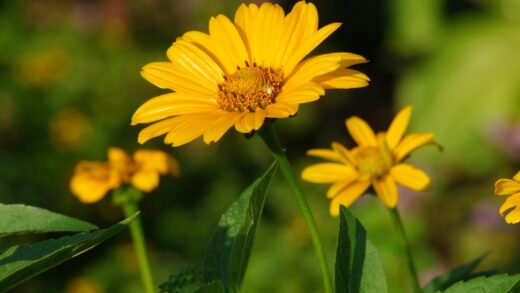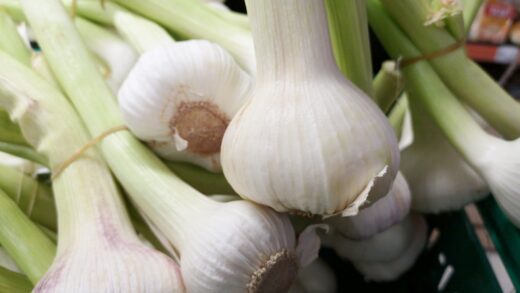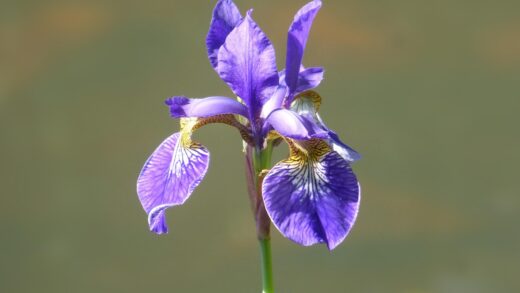Successfully establishing a Chinese empress tree begins with proper planting techniques, which are fundamental to its long-term health and vigorous growth. This remarkable tree, known for its rapid development and stunning floral displays, requires careful consideration of timing, location, and methodology during the planting process. Whether you are starting with a nursery-grown sapling, a bare-root specimen, or even from seed, the initial steps you take will largely determine the future success of the tree. Ensuring the site is well-prepared and the young tree is planted correctly provides the strong foundation needed to support its incredible growth potential and resilience in the garden environment.
The ideal time for planting a Paulownia tomentosa is during the dormant season, either in the autumn after leaf drop or in early spring before new buds begin to swell. Planting in the autumn allows the root system to establish itself over the winter months, giving the tree a head start for the following spring’s growth. Spring planting is also highly effective, especially in regions with very cold winters, as it avoids exposing the young, vulnerable tree to the harshest weather immediately after being transplanted. Regardless of the season chosen, planting on an overcast, calm day can help reduce transplant shock by minimizing moisture loss from the leaves and roots.
The process of planting involves more than simply digging a hole; it is about creating an optimal environment for the roots to thrive. The planting hole should be dug two to three times wider than the tree’s root ball but no deeper, as this encourages the roots to spread horizontally into the surrounding soil. It is crucial that the top of the root ball sits level with or slightly above the ground level to prevent issues like collar rot. After placing the tree in the hole, it should be backfilled with the original soil, amended with compost if necessary, gently firming the soil around the roots to eliminate any large air pockets.
After planting, thorough watering is absolutely essential to settle the soil around the roots and provide the necessary hydration for the tree to recover from the transplanting process. A deep and slow watering is most effective, ensuring the entire root zone is saturated. Applying a layer of organic mulch around the base of the newly planted tree will help conserve this moisture, regulate soil temperature, and suppress competing weeds. This initial care and attention to detail during planting are investments that will pay significant dividends in the form of a healthy, fast-growing, and magnificent empress tree.
Selecting the ideal planting material
The journey of growing an empress tree can begin from several different starting points, each with its own set of considerations. The most common method for home gardeners is to purchase a container-grown sapling from a reputable nursery. When selecting a young tree, look for a specimen with a straight, strong central leader and a well-developed root system that is not excessively pot-bound. Avoid trees that show any signs of stress, disease, or pest infestation, such as discolored leaves, cankers on the stem, or visible insects. A healthy, vigorous sapling will establish much more quickly and successfully in the garden.
More articles on this topic
Another option is to plant a bare-root tree, which is typically available from mail-order nurseries during the dormant season. These trees are dug from the ground when dormant and shipped without soil around their roots. While often more affordable, they require immediate attention upon arrival. The roots must be soaked in water for several hours before planting to rehydrate them, and it is critical to plant them as soon as possible to prevent the delicate roots from drying out. When planting a bare-root tree, it is important to build a small mound of soil at the bottom of the planting hole to spread the roots over, ensuring they are positioned naturally.
For the patient and adventurous gardener, growing Paulownia tomentosa from seed offers a rewarding experience. The seeds have a high germination rate but require specific conditions, including light, to sprout, so they should be sown on the surface of a sterile seed-starting mix and not covered with soil. The seed trays need to be kept consistently moist and warm, and germination can be expected within a few weeks. Seedlings are very tender and grow rapidly, so they will need to be transplanted into larger individual pots as they develop before they are strong enough to be planted out in the garden.
Regardless of the starting material you choose, the quality of the plant is paramount. A healthy, well-cared-for sapling or viable seed stock will have a much greater chance of developing into a magnificent tree. It is worth investing time in sourcing your plant from a reliable supplier to ensure it is true to type and free from any underlying health issues. This initial selection process is a foundational step that can significantly influence the entire life and performance of your Chinese empress tree in the landscape.
Propagation from cuttings
Propagating the empress tree from cuttings is a highly effective method for creating new plants that are genetically identical to the parent tree. This is particularly useful if you wish to replicate a specimen with exceptionally beautiful flowers or a desirable growth habit. The two most common types of cuttings used for Paulownia are root cuttings and softwood cuttings. Both methods have high success rates and can produce a plantable sapling within a single growing season, capitalizing on the tree’s natural vigor and ability to regenerate.
More articles on this topic
Root cuttings are best taken during the dormant season, from late autumn to early spring, when the tree’s energy reserves are stored in the root system. To take a root cutting, carefully excavate a section of root from the parent tree, choosing a healthy root that is about the thickness of a pencil. Cut this root into several sections, each about 5-10 centimeters long, making a straight cut on the end closest to the tree and a slanted cut on the other end to help you remember the correct orientation. These cuttings can then be planted vertically in a pot filled with a well-draining potting mix, with the straight-cut end just below the surface.
Softwood cuttings, on the other hand, are taken from the new, vigorous growth of the current season, typically in late spring or early summer. Select a healthy, non-flowering shoot and take a cutting that is about 10-15 centimeters long, making the cut just below a leaf node. Remove the leaves from the lower half of the cutting to reduce water loss, and dip the cut end into a rooting hormone powder to encourage faster root development. These prepared cuttings should be inserted into a moist, sterile medium like a mix of perlite and peat moss, and kept in a warm, humid environment, such as a propagator or under a plastic bag, until roots form.
With both methods, patience and consistent care are key. The medium should be kept consistently moist but not saturated to prevent rot. Providing bottom heat can also accelerate the rooting process, especially for softwood cuttings. Once the cuttings have developed a strong root system, which can be checked by a gentle tug, they can be carefully transplanted into individual pots to grow on. This method of vegetative propagation is a reliable and rewarding way to increase your stock of this spectacular tree.
Step-by-step planting guide for saplings
Planting a container-grown or bare-root empress tree sapling is a straightforward process when broken down into manageable steps. The first step, after choosing the right location, is to dig the planting hole. As a rule of thumb, the hole should be two to three times as wide as the root ball and just as deep. This ensures that the surrounding soil is loosened, allowing the roots to penetrate easily and establish themselves quickly. Piling the excavated soil onto a tarp next to the hole can make the backfilling process cleaner and more manageable.
The second step is to prepare the tree for planting. If you have a container-grown tree, carefully remove it from its pot, trying to keep the root ball intact. Gently inspect the roots and if they are tightly circling, carefully tease them out or make a few vertical cuts with a sharp knife to encourage outward growth. For a bare-root tree, ensure the roots have been soaked in water for several hours prior to planting. Prune off any damaged or broken roots with clean secateurs before placing it in the hole.
The third step is positioning the tree correctly in the hole. It is critically important to ensure the tree is planted at the correct depth. The point where the trunk flares out to meet the roots, known as the root collar, should be level with or slightly above the surrounding soil surface. Planting too deeply is a common mistake that can lead to a slow decline and eventual death of the tree. Use a straight edge, like a shovel handle, placed across the hole to accurately gauge the correct planting depth before you begin backfilling.
The final steps involve backfilling the hole and providing initial care. Use the original soil to fill the hole back in, gently tamping it down as you go to remove any large air pockets without overly compacting the soil. Once the hole is filled, create a shallow basin or “water ring” of soil around the perimeter of the planting hole to help direct water to the root zone. Water the newly planted tree thoroughly and deeply, and then apply a 2-3 inch layer of organic mulch around the base, keeping it away from the trunk, to conserve moisture and protect the roots.
Post-planting care and establishment
The care provided in the first few weeks and months after planting is crucial for the successful establishment of your Chinese empress tree. The most important task during this period is to ensure the tree receives adequate and consistent moisture. The root system needs time to grow out from the original root ball into the surrounding soil, and until it does, it is entirely dependent on the moisture within that initial planting area. You should check the soil every few days and water deeply whenever the top few inches feel dry to the touch, adjusting frequency based on rainfall and temperature.
Monitoring the young tree for signs of transplant shock is also important. Some wilting or leaf drop can be normal as the tree adjusts to its new environment, but excessive or prolonged symptoms may indicate a problem, such as insufficient watering or root damage. Ensure the tree remains stable and upright, especially after strong winds or heavy rain. If the tree was planted in a particularly windy location, temporary staking may be necessary for the first year to prevent wind rock, which can damage the developing roots and hinder establishment. The stakes should be removed after one year to allow the tree to develop its own trunk strength.
Weed control is another key aspect of post-planting care, as vigorous weeds can compete with the young tree for essential water, nutrients, and sunlight. Maintaining a wide, weed-free area around the base of the tree, ideally through a layer of organic mulch, will significantly reduce this competition. A 2-3 inch layer of mulch, such as wood chips or bark, will not only suppress weeds but also help retain soil moisture and regulate soil temperature, creating a more favorable environment for root growth. Replenish the mulch layer as needed to maintain its depth.
As the tree begins to show signs of new growth, such as swelling buds and emerging leaves, it is a clear indication that it is starting to establish itself. During the first growing season, it is generally best to avoid heavy fertilization, as this can force top growth before the root system is ready to support it. A light application of a balanced, slow-release fertilizer in the first spring after planting can be beneficial, but the primary focus should remain on providing consistent water. This diligent care during the establishment phase will set the stage for the tree’s future health and spectacular growth.


















